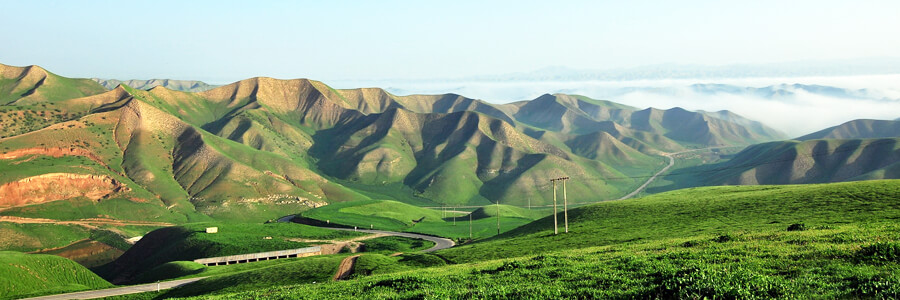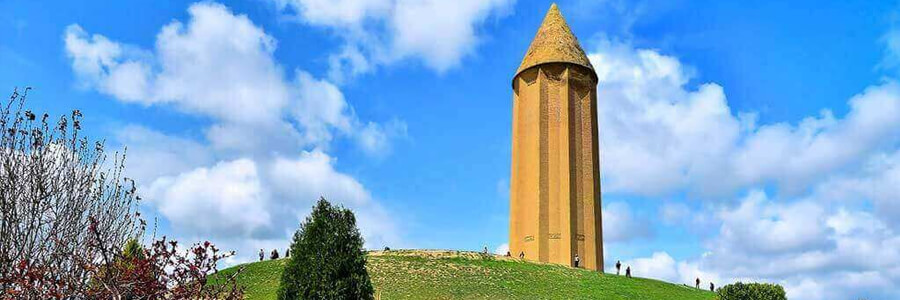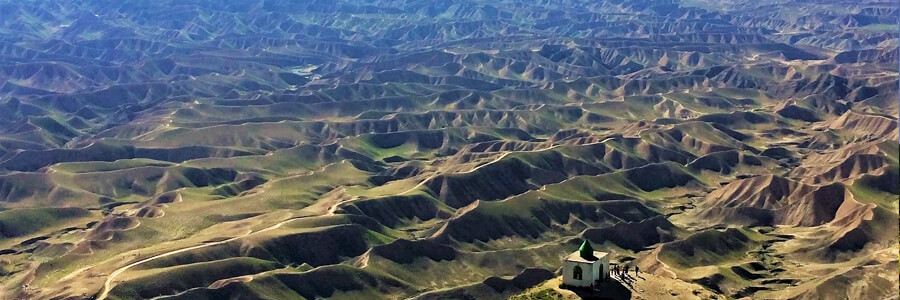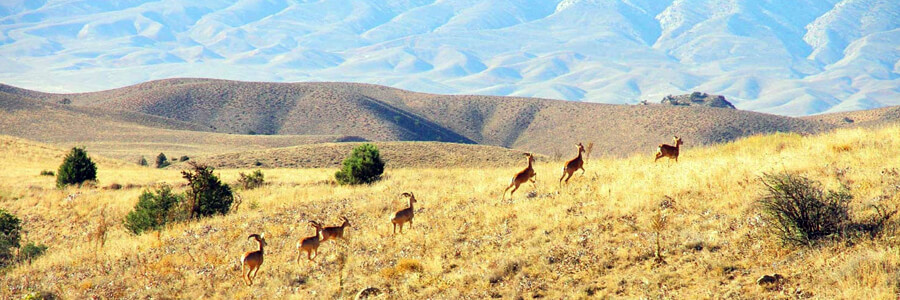Golestan Province (Golestaan) is one of the 31 provinces of Iran, located in the north-east of the country south of the Caspian Sea. Its capital is Gorgan. Golestaan derives its name from a wider region known historically as Gorgaan (Gorgan), Middle Persian Gurgan, and Old Persian Varkaana (in the Behistun Inscription) meaning "The Land of Wolves". This is also the root of the Ancient Greek Ὑρκανία (Hyrkania) and Latin Hyrcania. Wild wolves are still found in Golestan.

Road to Khaled-e Nabi
Human settlements in this area date back to 10000 BC. Evidence of the ancient city of Jorjan can still be seen near the current city of Gonbad-e Kavus. It was an important city of Persia located on the Silk Road. The world's tallest brick tower, the Gonbad-e Qabus, stands in this province.
Under the Achaemenid Iran, it seems to have been administered as a sub-province of Parthia and is not named separately in the provincial lists of Darius and Xerxes. The Hyrcanians, however, under the leadership of Megapanus, are mentioned by Herodotus in his list of Xerxes’ army during the invasion of Greece.

Gonbad-e Kavus
Golestan enjoys mild weather and a temperate climate most of the year. Geographically, it is divided into two sections:
The plains, and the mountains of the Alborz range. In the eastern Alborz section, the direction of mountains faces northeast and gradually decreases in height. The highest point of the province is Shavar, with a height of 3,945 meters.
The beautiful scenery, composed of exceptional green canyons and velvet-smooth rolling hills, and Khalid Nabi, the tomb of a pre-Islamic prophet whose location is far more than outstanding, should be in the highlights of any travel guide to Iran.

Khalid Nabi Cemetery
The landscape and the epic archaeological sites are not the only reason for visiting Golestan but, from a cultural point of view, this is a very unique region.
And the reason is that, since it borders Turkmenistan, Golestan province has a large population of Turkmens.

Golestan National Park





